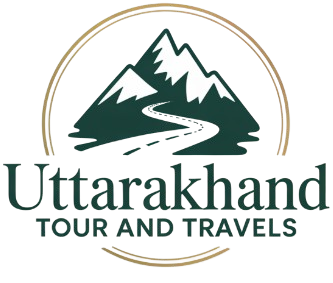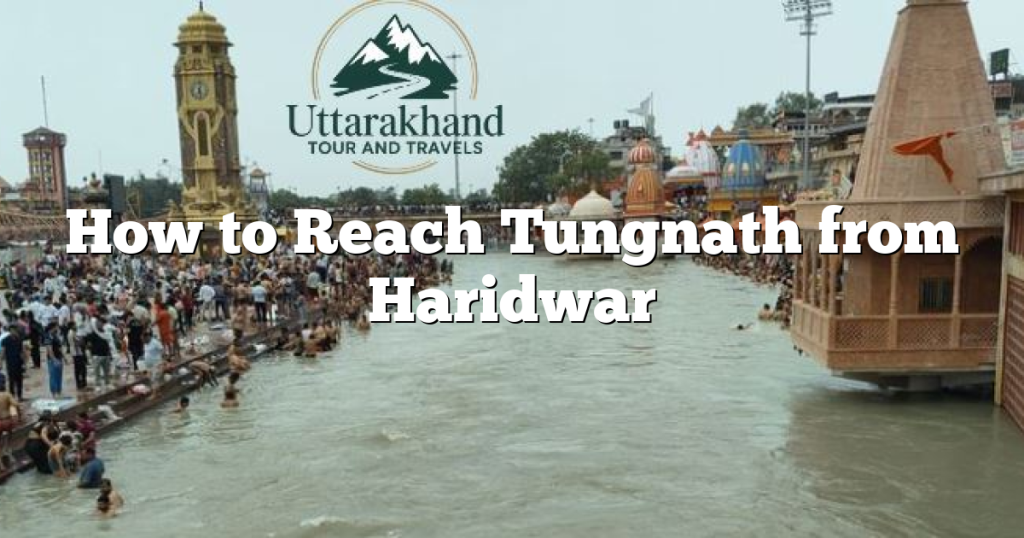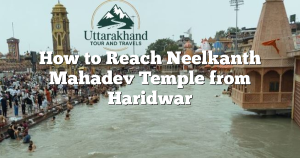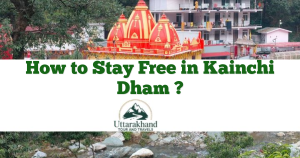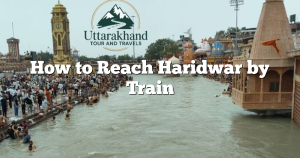Tungnath Temple, nestled amidst the majestic Garhwal Himalayas, is the highest Shiva temple in the world and one of the Panch Kedar shrines. It’s a revered pilgrimage site and a popular trekking destination known for its stunning panoramic views and serene natural beauty. Reaching Tungnath involves a multi-stage journey, combining a long road trip with a rewarding trek.
Important Note: Tungnath Temple is typically open from late April/early May (around Akshaya Tritiya) until early November (after Diwali). During winter, the temple remains closed due to heavy snowfall, and the idol is shifted to its winter abode in Makkumath. For 2025, the tentative opening date for Tungnath Temple is May 2nd.
The Journey to Tungnath: A Multi-Stage Expedition
There are no direct roads or trains to Tungnath. Your journey from Haridwar will involve:
- Haridwar to Chopta (By Road): Chopta is the last motorable point and the base camp for the Tungnath trek.
- Chopta to Tungnath Temple (Trek Only): The final ascent to the temple.
How to Reach Tungnath from Haridwar
Here’s a detailed breakdown of the journey:
Stage 1: Haridwar to Chopta (By Road)
Chopta, often called “Mini Switzerland of India,” is a picturesque meadow that serves as the starting point for the Tungnath trek.
- Distance: Approximately 215-230 kilometers.
- Journey Time: This road journey typically takes 7 to 9 hours, depending on road conditions, traffic, and the number of stops. It’s advisable to start very early in the morning from Haridwar to reach Chopta before nightfall.
- Route: The most common route follows NH 58 (now partly NH 7 and NH 107): Haridwar – Rishikesh – Devprayag – Srinagar – Rudraprayag – Agastyamuni – Kund – Ukhimath – Chopta. The roads are generally well-maintained national highways initially, then transition to winding mountain roads. Landslides can occur during the monsoon (July-August), potentially increasing travel time.
a. By Taxi/Cab (Most Comfortable and Convenient)
Hiring a private taxi or cab is the most preferred option for this long mountainous drive, offering comfort and flexibility.
- Pros: Door-to-door service, privacy, and the freedom to stop for meals, views, or photography. Ideal for families or groups.
- Cons: Most expensive option.
- Price Estimates: A one-way private taxi (sedan like Dzire/Etios) can cost approximately ₹6,000 to ₹10,000. For larger vehicles like SUVs (Ertiga/Innova), the cost can range from ₹8,000 to ₹12,000. These prices are estimates; always confirm if tolls, taxes, and driver allowances are included before booking.
- Tips: Book your taxi well in advance, especially during the peak trekking and pilgrimage season (May-June and September-October). Negotiate the fare clearly. Starting early (e.g., 5-6 AM) from Haridwar is crucial to avoid heavy traffic on the plains and ensure you reach Chopta safely before dark.
b. By Bus (Economical)
Public buses are available, but they require transfers and take considerably longer.
- Journey Time: Bus journeys can take 9 to 12 hours or more, including transfers and stops.
- Operators: You would typically take a Uttarakhand Transport Corporation (UTC) bus from Haridwar to Rudraprayag or Ukhimath.
- Haridwar to Rudraprayag: Frequent buses are available. Takes approximately 5-6 hours.
- Rudraprayag to Ukhimath: Limited direct buses or shared jeeps. Takes about 2-3 hours.
- Ukhimath to Chopta: Very limited direct buses. Shared jeeps (Sumos/Maxx) are the primary mode of transport for the last 30-35 km, taking about 1-1.5 hours.
- Ticket Price Estimates: Fares are economical. Haridwar to Rudraprayag might be around ₹300-₹500. Onward shared jeeps to Ukhimath and Chopta would add another ₹150-₹300.
- Pros: Very budget-friendly.
- Cons: Long, tiring, and less comfortable. Involves multiple changes, which can be time-consuming and may require waiting. Luggage space can be limited.
- Tips: Inquire at the Haridwar Bus Stand about direct buses to Ukhimath if available, otherwise, aim for Rudraprayag as an intermediate hub. Ensure you reach Ukhimath by early afternoon to catch shared jeeps to Chopta, as services might become scarce later in the day.
c. Shared Taxis/Jeeps (Budget-Friendly and Direct)
A more direct and cost-effective option than buses for solo travelers or small groups is to opt for shared taxis or jeeps, which are common on this route.
- Pros: More direct than changing multiple buses. Relatively quicker than buses.
- Cons: Can be crowded as they fill up to capacity. Less comfortable than private taxis.
- Price Estimates: Fares could range from ₹1,500 to ₹3,000 per person, depending on the number of passengers and the type of vehicle.
- Tips: Inquire at major taxi stands in Haridwar or Rishikesh. They typically depart once all seats are filled.
Stage 2: Chopta to Tungnath Temple (The Trek)
From Chopta, the journey continues on foot.
- Trek Distance: Approximately 3.5 to 4 kilometers from Chopta to Tungnath Temple.
- Trek Time: The uphill trek usually takes 2.5 to 4 hours one way, depending on your fitness level and pace. The path is well-defined and paved with stones, making it relatively easy to navigate.
- Difficulty: Considered an easy to moderate trek. While it’s continuously uphill, the gradient is mostly gradual. People of varying age groups and fitness levels successfully complete this trek.
- Options:
- On Foot: The most common way.
- Mules/Ponies: Available for hire at Chopta for those who prefer not to walk the entire distance. This is a popular option for pilgrims or those with limited trekking experience.
- Porters/Dandis (Palanquins): Can also be hired for carrying luggage or for individuals who cannot walk.
- Accommodation: You must stay overnight in Chopta, as there are no accommodation options at Tungnath Temple itself. Chopta offers various guesthouses, camps, and basic hotels.
- Further Trek to Chandrashila: From Tungnath Temple, a further trek of about 1.5 kilometers (approximately 1 hour) leads to Chandrashila Peak (around 3,960 meters), which offers breathtaking 360-degree views of the Himalayan peaks, including Nanda Devi, Trishul, Chaukhamba, and Kedarnath. This part of the trek is steeper.
Overall Trip Considerations
- Multi-Day Trip: A trip to Tungnath from Haridwar requires a minimum of 2-3 days:
- Day 1: Haridwar to Chopta (road travel). Overnight stay in Chopta.
- Day 2: Trek to Tungnath Temple and potentially Chandrashila Peak, then descend back to Chopta. Overnight stay in Chopta.
- Day 3: Travel back from Chopta to Haridwar.
- Best Time to Visit:
- Summer (May-June): Pleasant weather, rhododendrons in bloom.
- Autumn (September-October): Clear skies, lush green landscapes after the monsoon, excellent views.
- Avoid Monsoon (July-August): Heavy rainfall can make roads slippery and increase the risk of landslides, and the trek path can be muddy.
- Altitude Sickness: While the trek is not extremely high, it’s advisable to spend a night in Chopta to acclimatize. Stay hydrated.
- Essentials: Carry warm clothing (even in summer, it can get cold at higher altitudes), good trekking shoes, rain gear, a basic first-aid kit, and sufficient water/snacks for the trek. There are small tea/snack shops along the Chopta-Tungnath trek route.
Reaching Tungnath from Haridwar is a fulfilling journey for those seeking spiritual solace or an adventurous trek amidst the pristine beauty of the Himalayas. Proper planning, especially regarding transport and accommodation, will ensure a memorable experience.
